This is named after Richmal Crompton, the author best known for her ‘William’ books. William Brown first appeared in a series of short stories, written in Richmal’s spare time, while she was a teacher at Bromley High School for Girls. She lived in Bromley for 26 years, first in Cherry Orchard Road and later in nearby Oakley Road.
A photograph and text about Richmal Crompton.
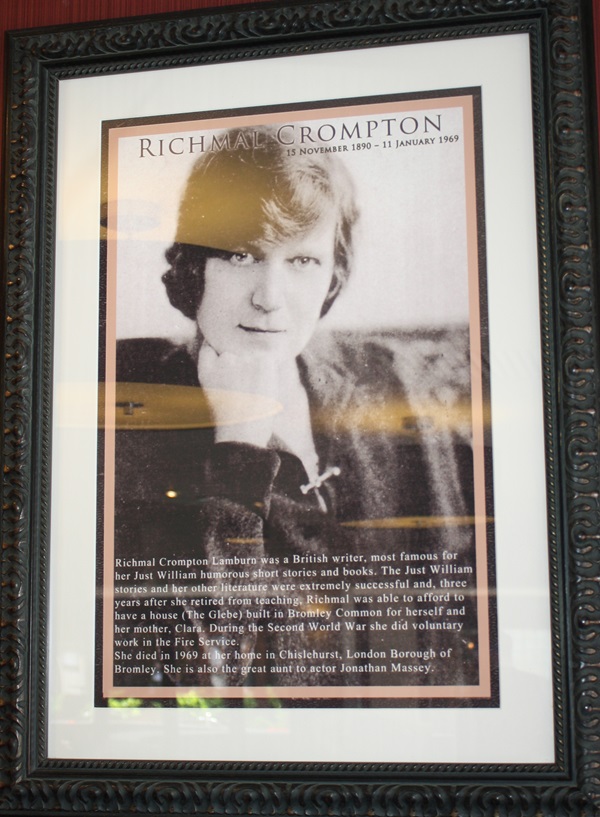
The text reads: Richmal Crompton Lamburn was a British writer, most famous for her Just William humorous short stories and books. The Just William stories and her other literature were extremely successful and, three years after she retired from teaching, Richmal was able to afford to have a house (The Glebe) built in Bromley Common for herself and her mother, Clara. During the Second World War she did voluntary work in the fire service.
She died in 1969 at her home in Chislehurst, London Borough of Bromley. She is also the great aunt to actor Jonathan Massey.
Photographs and text about Siouxsie-Sioux.
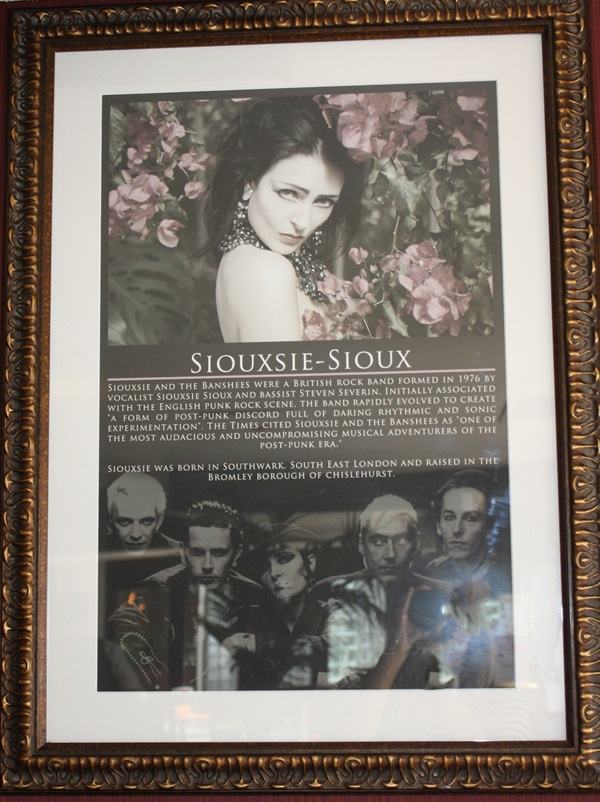
The text reads: Siouxsie and the Banshees were a British rock band formed in 1976 by vocalist Siouxsie Sioux and bassist Steven Severin. Initially associated with the English punk rock scene, the band rapidly evolved to create “a form of post-punk discord full of daring rhythmic and sonic experimentation”. The Times cited Siouxsie and the Banshees as “one of the most audacious and uncompromising musical adventures of the post-punk era.”
Siouxsie was born in Southwark, South East London and raised in the Bromley borough of Chislehurst.
A photograph and text about David Bowie.
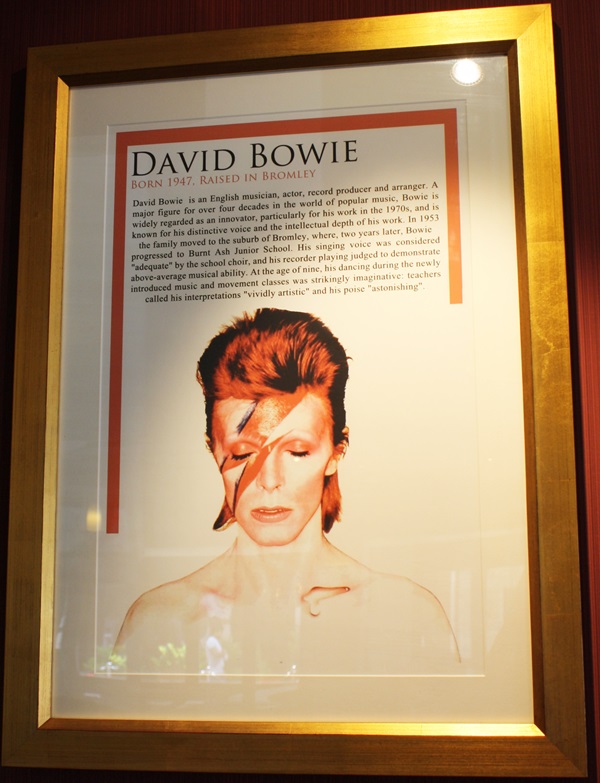
The text reads: David Bowie is an English musician, actor, record producer and arranger. A major figure for over four decades in the world of popular music. Bowie is widely regarded as an innovator, particularly for his work in the 1970s, and is known for his distinctive voice and the intellectual depth of his work. In 1953 the family moved to the suburb of Bromley, where, two years later, Bowie progressed to Burnt Ash Junior School. His singing voice was considered 'adequate' by the school choir and his recorder playing judged to demonstrate above-average musical ability. At the age of nine, his dancing during the newly introduced music and movement classes was strikingly imaginative: teachers called his interpretations "vividly artistic" and his poise "astonishing".
A photograph and text about Billy Idol.
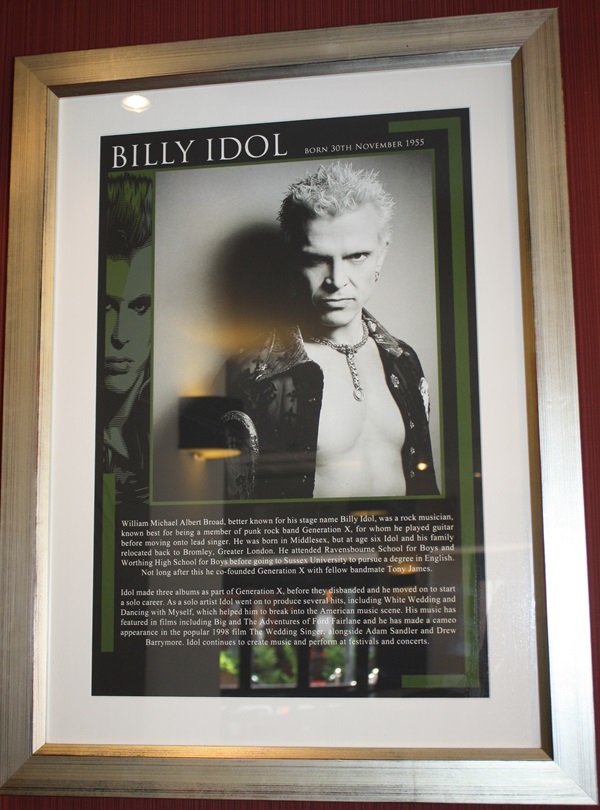
The text reads: William Michael Albert Broad, better known for his stage name Billy Idol, was a rock musician known best for being a member of punk rock band Generation X, for whom he played guitar before moving onto lead singer. He was born in Middlesex, but at age six ldol and his family relocated back to Bromley, Greater London. He attended Ravensbourne School for Boys and Worthing High School for Boys before going to Sussex University to pursue a degree in English. Not long after this he co-founded Generation X with fellow bandmate Tony James.
Idol made three albums as part of Generation X, before they disbanded and he moved on to start a solo career. As a solo artist ldol went on to produce several hits, including White Wedding and Dancing with Myself, which helped him to break into the American music scene. His music has featured in films including Big and The Adventures of Ford Fairlane and he has made a cameo appearance in the popular 1998 film The Wedding Singer, alongside Adam Sandler and Drew Barrymore. Idol continues to create music and perform at festivals and concerts.
Prints and text about the Just William series.
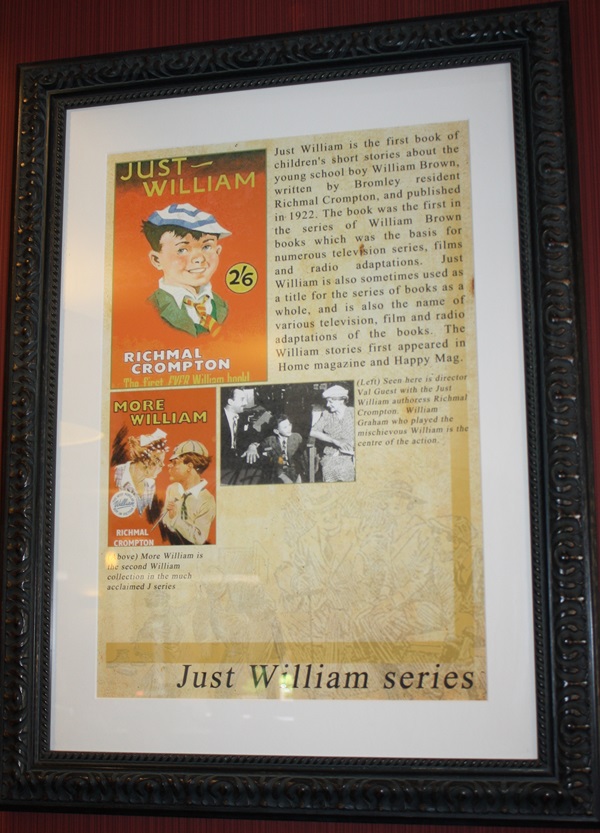
The text reads: Just William is the first book of children's short stories about the young school boy William Brown, written by Bromley resident Richmal Crompton, and published in 1922. The book was the first in the series of William Brown books which was the basis for numerous television series, films and radio adaptations. Just William is also sometimes used as a title for the series of books as a whole, and is also the name of various television, film and radio adaptations of the books. The William stories first appeared in Home magazine and Happy Mag.
Left: Seen here is director Val Green with the Just William authoress Richmal Crompton. William Graham who played the mischievous William is the centre of the action.
Above: More William is the second William collection in the much acclaimed J series.
A photograph and text about H G Wells.
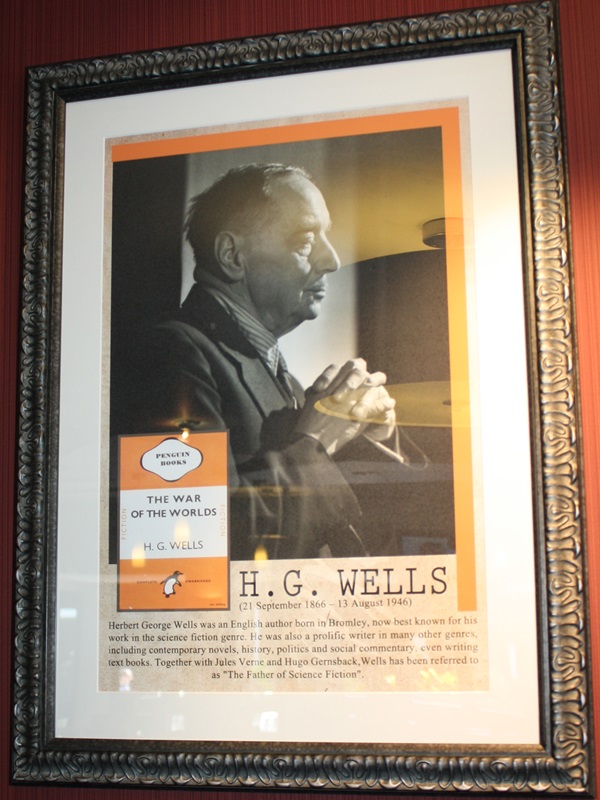
The text reads: Herbert George Wells was an English author born in Bromley, now best known for his work in the science fiction genre. He was also a prolific writer in many other genres, including contemporary novels, history, politics and social commentary, even writing text books. Together with Jules Verne and Hugo Gernsback, Wells has been referred to as “The Father of Science Fiction”.
A photograph and text about Dame Antoinette Sibley.
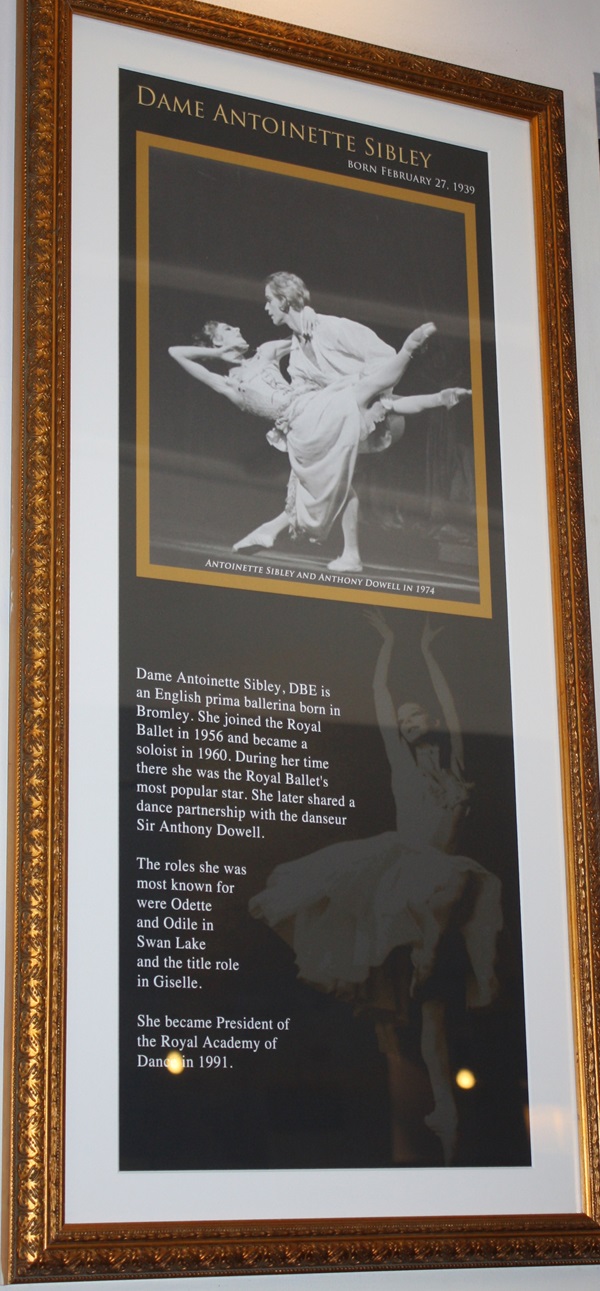
The text reads: Dame Antoinette Sibley DBE is an English prima ballerina born in Bromley. She joined the Royal Ballet in 1956 and became a soloist in 1960. During her time there she was the Royal Ballet's most popular star. She later shared a dance partnership with the danseur Sir Anthony Dowell.
The roles she was most known for were Odette and Odile in Swan Lake and the title role in Giselle. She became President of the Royal Academy of Dance in 1991.
A photograph and text about Billy Jenkins.
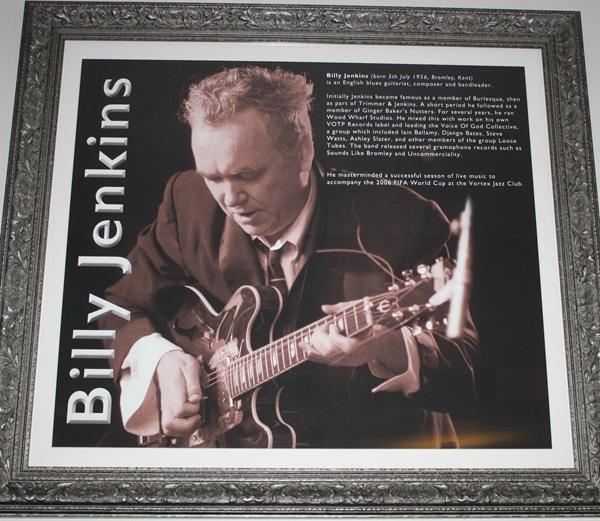
The text reads: Billy Jenkins (born 5 July 1956, Bromley, Kent) is an English blues guitarist, composer and bandleader.
Initially Jenkins became famous as a member of Burlesque, then as part of Trimmer & Jenkins. A short period he followed as a member of Ginger Baker's Nutters. For several years, he ran Wood Wharf Studios. He mixed this with work on his own VOTP Records label and leading the Voice Of God Collective, a group which included lain Ballamy. Django Bates, Steve Watts, Ashley Slater, and other members of the group Loose Tubes. The band released several gramophone records such as Sounds Like Bromley and Uncommerciality.
He masterminded a successful season of live music to accompany the 2006 FA World Cup at the Vortex Jazz Club.
A photograph and text about Biggin Hill.
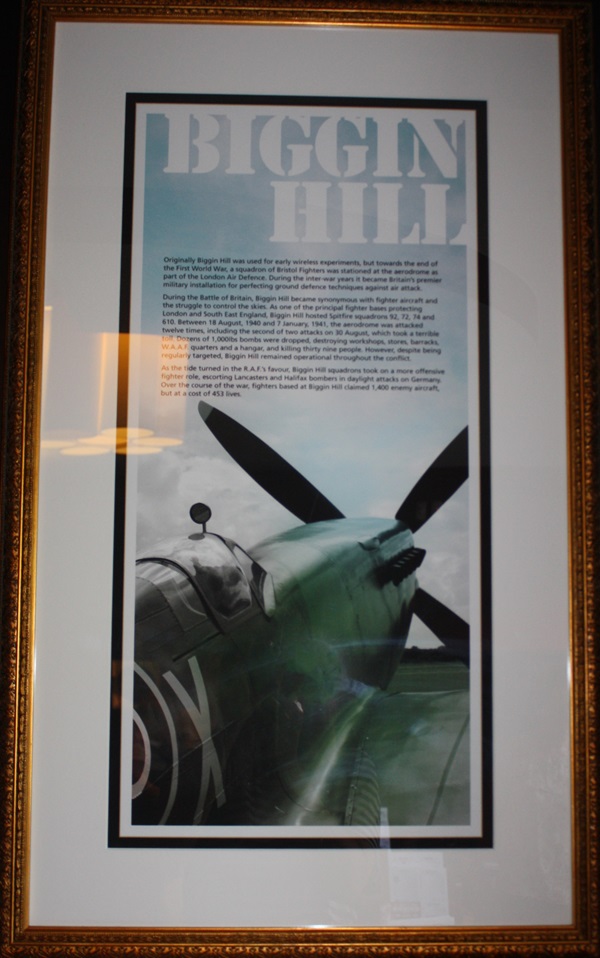
The text reads: Originally Biggin Hill was used for early wireless experiments, but towards the end of the First World War, a squadron of Bristol Fighters was stationed at the aerodrome as part of the London Air Defence. During the inter-war years it became Britain's premier military installation for perfecting ground defence techniques against air attack.
During the Battle of Britain, Biggin Hill became synonymous with fighter aircraft and the struggle to control the skies. As one of the principal fighter bases protecting London and South East England, Biggin Hill hosted Spitfire squadrons 92, 72, 74 and 610. Between 18 August, 1940 and 7 January, 1941, the aerodrome was attacked twelve times, including the second of two attacks on 30 August, which took a terrible toll. Dozens of 1,000lbs bombs were dropped, destroying workshops, stores, barracks, W.A.A.F quarters and a hangar, and killing thirty nine people. However, despite being regularly targeted, Biggin Hill remained operational throughout the conflict.
As the tide turned in the R.A.F's favour, Biggin Hill squadrons took on a more offensive fighter role, escorting Lancasters and Halifax bombers in daylight attacks on Germany. Over the course of the war, fighters based at Biggin Hill claimed 1,400 enemy aircraft, but at a cost of 453 lives.
A print and text about Emperor Napoleon III.
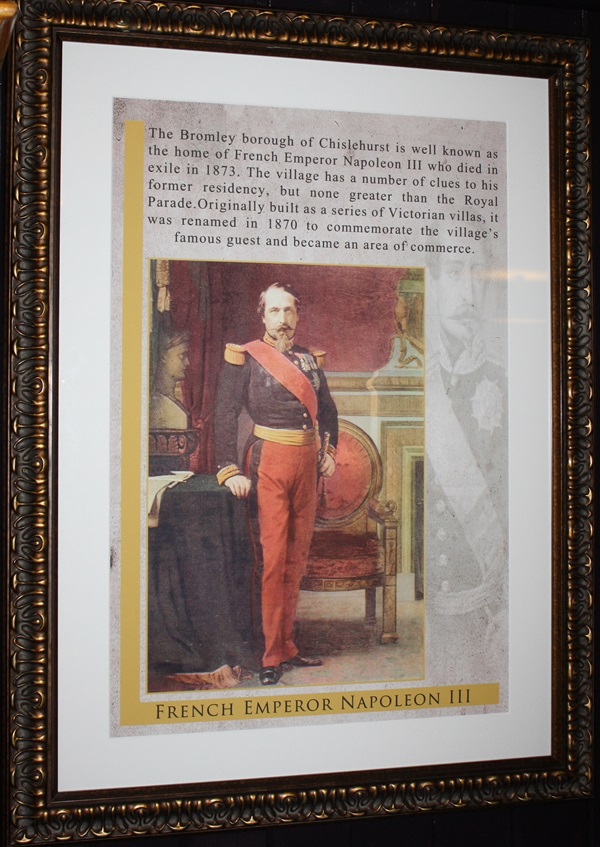
The text reads: The Bromley borough of Chislehurst is well known as the home of French Emperor Napoleon III who died in exile in 1873. The village has a number of clues to his former residency, but none greater than the Royal Parade originally built as a series of Victorian villas, it was renamed in 1870 to commemorate the village's famous guest and became an area of commerce.
Illustrations and text about Jane Austen.
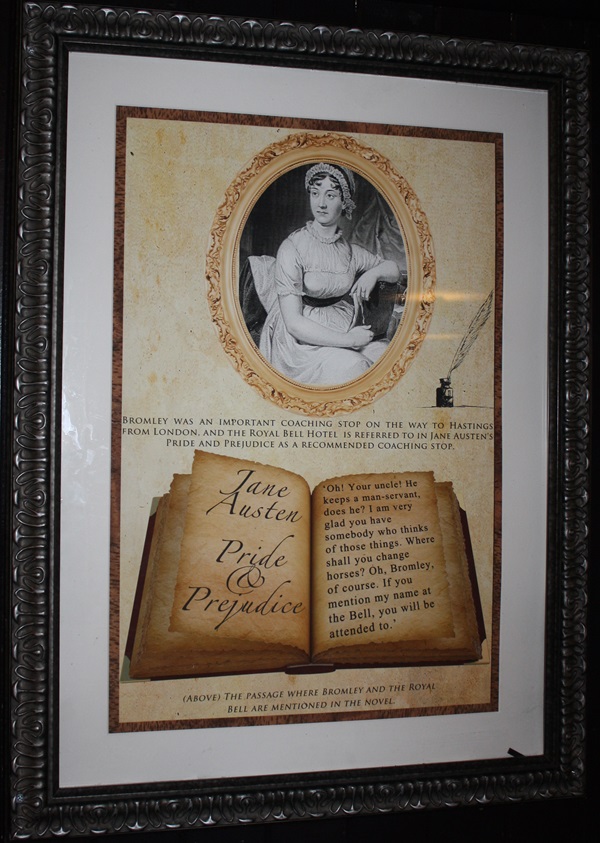
The text reads: Bromley was an important coaching stop on the way to Hastings from London, and the Royal Bell Hotel is referred to in Jane Austen’s Pride and Prejudice as a recommended coaching stop.
"Oh! Your uncle! He keeps a man-servant, does he? I am very glad you have somebody who thinks of those things. Where shall you change horses? Oh, Bromley, of course. If you mention my name be Bell, you will attend to."
Above: The passage where Bromley and the Royal Bell are mentioned in the novel.
A photograph and text about Severndroog Castle.
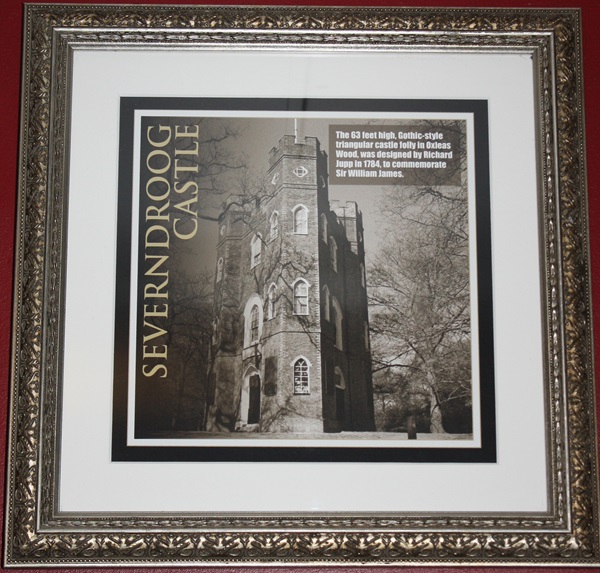
The text reads: The 63 feet high, gothic-style triangular castle folly in Oxleas Wood, was designed by Richard Jupp in 1784, to commerce Sir William James.
A photograph and text about Charles de Gaulle.
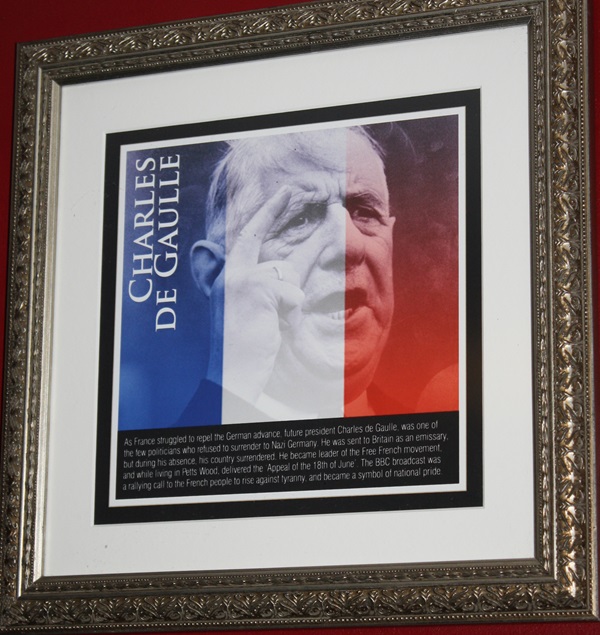
The text reads: As France struggled to repel the German advance, future president Charles de Gaulle was one of the few politicians who refused to surrender to Nazi Germany. He was sent to Britain as an emissary but during his absence his country surrendered. He became leader of the Free French movement and while living in Petts Wood delivered the ‘Appeal of the 18th of June’. The BBC broadcast was a rallying call to the French people to rise against tyranny and became a symbol of national pride.
An illustration and text about Sir John Lubbock, 4th Baronet.
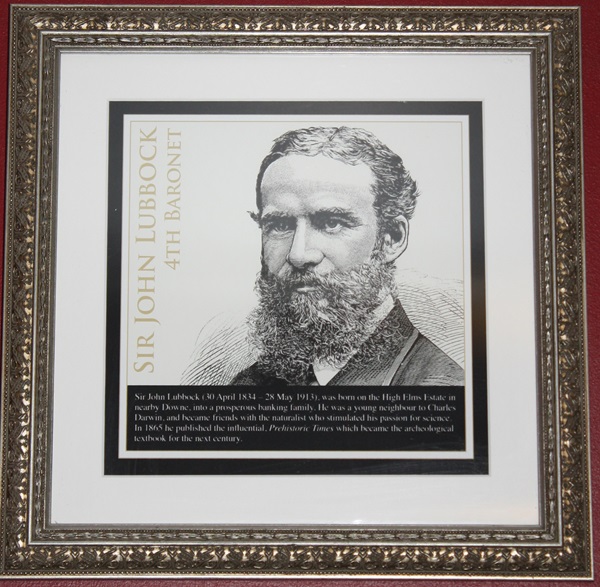
The text reads: Sir John Lubbock (30 April 1834- 28 1913), was born on the High Elms Estate in nearby Downe, into a prosperous banking family. He was a young neighbour to Charles Darwin, and became friends with the naturalist who stimulated his passion for science. In 1865 he published the influential, Prehistoric Times which became the archaeological text book for the next century.
External photograph of the building – main entrance.
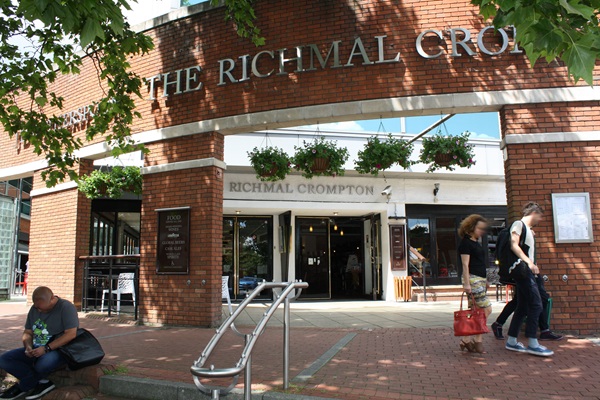
If you have information on the history of this pub, then we’d like you to share it with us. Please e-mail all information to: pubhistories@jdwetherspoon.co.uk